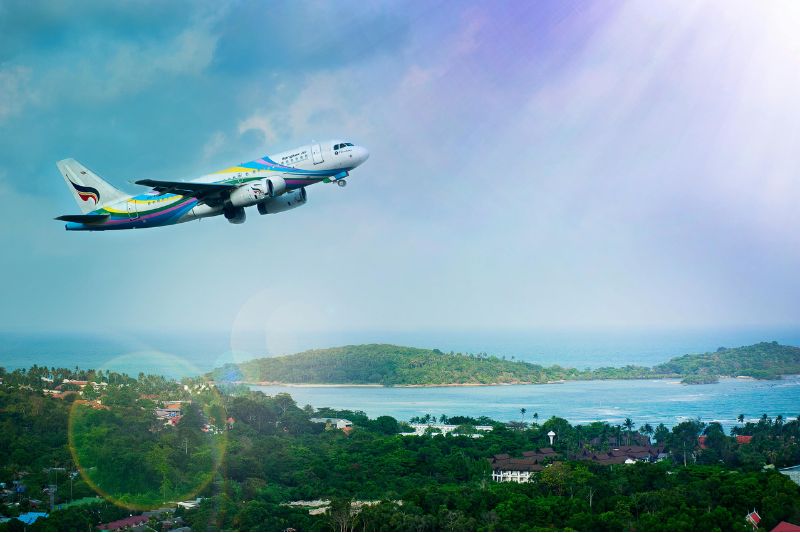Imagine catching the best waves of your life, knowing that if anything goes wrong, you’re fully covered. Travel insurance might seem like an unnecessary cost—until you really need it. Trust me when I say that it’s one area where you want to spend money and hope that it never gets put to use! In my eyes, being covered for accidents and emergency medical situations when you are overseas is essential, and I’ll tell you why.
The costs for medical care for certain accidents could be in the hundreds of thousands of dollars. The cost of repatriation (if you need to be flown back to your home country for medical care) is thousands of dollars. If you are receiving care in the country of travel, some countries will refuse to treat you if you can’t provide your travel insurance or payment upfront.
Need a real story to relate to? In our recent interview with Digital Nomad Daniel Signorile, he told a story of a friend of his who broke his leg in Indonesia, and had to provide upfront payment to be treated. Sadly, he was travelling without health insurance, and so his family had to gather the payment upfront and transfer it to Indonesia.
Putting aside the heavy stuff, as a digital nomad surfer, it’s worth having insurance just for the peace of mind and to be able to surf your heart out without worrying about the cost if something were to go wrong! Depending on the country you are visiting, travel insurance may even be a requirement.
To make it straightforward and easy, in this article we go through the main types of policies that would be of use to you when travelling longer term and surfing, as well as some key considerations before buying an insurance policy.
Types of Travel Insurance for Digital Nomads

Policies vary based on the timeframe or number of trips they cover:
- Single Trip Insurance – This type of policy covers one continuous trip, which can be multi location.
- Annual Multi Trip – This type of policy will cover you for more than one, non-continuous trips within the policy time frame
Types of Travel Insurance for Digital Nomads: Pros & Cons
| Insurance Type | Pros | Cons |
|---|---|---|
| Single Trip Insurance | ✅ Usually cheaper if you’re taking only one long trip. ✅ Covers one continuous trip, even across multiple locations. | ❌ Limited duration (e.g., 30, 60, 90, or 180 days). ❌ May require returning home to renew. |
| Annual Multi-Trip Insurance | ✅ Covers multiple trips in a year. ✅ Can be cost-effective if traveling frequently. | ❌ Individual trip durations may be limited (e.g., max 30–90 days per trip). ❌ Usually more expensive than a single-trip policy for short-term travelers. |
The deciding factor between single or multi trip insurance would likely be down to how many trips you will be doing in a year. You can look into quotes for both and compare the price.
Destination Coverage for Remote Workers
Travel insurance policies also vary based on the locations that they cover:
- Country Specific – This option will cover you when travelling to the specific country(ies) that you have nominated. Country specific insurance can be cheaper, depending on the risk level of the location(s) you are visiting.
- Worldwide/International/Regional – This option gives you the freedom and flexibility to travel anywhere in the world or region selected, subject to the policy restrictions. Policies normally have restrictions on locations that are listed as “do not travel” on government advisory sites. Worldwide insurance is a good option if you want the ease of not having to input all of the countries you will be visiting or transiting through, or if you are unsure of all the destinations you will be travelling to at the time of booking. The price of these policies will generally be based on the highest risk location included in the policy, which can end up making it more expensive compared to a location specific policy.
A note on domestic travel: if you are travelling domestically you likely don’t need travel insurance, because you could still be covered under your country’s public medical system (if it has one) and under any domestic private health insurance plan you have.
Key Coverages to Look for in a Travel Insurance Policy

When you think of travel insurance, I wouldn’t blame you if your mind immediately goes to coverage for losing your luggage on the plane, or trip cancellation. Although these can be nice to haves, they actually aren’t the main reason to get travel insurance. As explained above, the most important thing to ensure you are covered for is any medical issues that could arise.
Here are some of the main things you would want to check that your policy covers when travelling as a digital nomad surfer.
Insurance Coverage Requirements for Digital Nomad Surfers:
✔ Emergency Medical Treatment & Evacuation (Repatriation) – Covers hospital bills and transportation back home if needed.
✔ Surfing Coverage – Not all policies automatically cover surfing, so check before buying!
I once met someone who worked in processing claims for an insurance company. She opened my eyes to the fact that surfing is a common exclusion in policies (she was frequently getting surfing related claims). At that time I had just assumed my policy covered me for it, and it had never even crossed my mind to check.
✔ Motorcycle/Scooter Accidents – If you plan to rent a scooter, you may need a motorcycle license + International Driving Permit (IDP) to be covered.
✔ High-Risk Activities – Activities like paragliding, diving, or trekking may be excluded unless you pay extra for an adventure sports add-on.
✔ Lost or Stolen Gear (Optional) – If you’re traveling with expensive laptops or surfboards, check if gear theft/loss is included.
Credit Card Travel Insurance
Some credit cards come with a travel insurance policy. The key things to note about travel insurance through your credit card are that:
- You need to book the trip on the card to be covered under the policy, and;
- The policy may, or may not, be of good quality.
Credit card travel insurance policies have a bad rep for having a sub par level of cover or inclusions. That being said, if you have one available to you, it’s worth reading it to get an understanding of it and to see if it covers your needs. I was personally surprised to find out that mine covers me for a high level of medical care, surfing, and riding a motorcycle.
Key Things to Remember When Buying Travel Insurance

Doing your due diligence when buying travel insurance means a few things. If you can tick off the below list, you can go into your adventure with your mind at ease.
Travel Insurance Buying Checklist:
- Understand the policy exclusions
- Check the included/excluded destinations
- Include transit locations when buying a country specific policy
- Know what the claims process is, save the number, and make sure you have a way to make a phone call. I was once alone in the middle of the night in Lombok, so weak from food poisoning that I had fainted, trying to figure out how to make a phone call to my insurance company when the roaming option on my phone plan didn’t work… Not something I will let happen again, but you live and you learn, right? Read about other top safety tips in our article: Top Tips for Staying Safe While Traveling as a Digital Nomad
- Understand that incidents that are a result of alcohol or drugs won’t be covered
In Summary
Although an annoying piece of admin, hopefully buying a good travel insurance policy can be a one time, set and forget task, which can then get you stoked for your trip!
In choosing a policy, you will need to decide whether you are buying a single trip or a multi-trip policy, and whether it will be country specific or worldwide.
Before buying, make sure you check that all the activities you plan to undertake are covered under the policy, and most importantly that you are covered for medical events and repatriation.
Now you are all set for your next adventure!
Want to surf more, stress less, and work from anywhere? Join our tribe! Get the best surf destination guides, remote work hacks, and inspiring nomadic surfer stories—delivered straight to your inbox.



